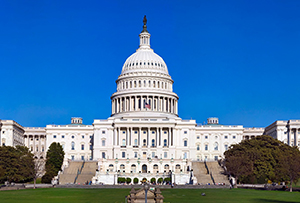
The SECURE Act 2019 Tax and Retirement Implications
The new law, effective January 1, 2020, changes some rules about retirement savings.
The SECURE legislation — which stands for “Setting Every Community Up for Retirement Enhancement” — puts into place numerous provisions intended to strengthen retirement security across the country. This act will bring major changes to retirement planning, with key changes geared towards beneficiaries of retirement plans and encouraging participation in employer sponsored retirement plans. If you have questions about how this legislation impacts your financial plan, review the implications with your wealth consultant, especially if you are planning to leave your IRA to nonspousal heirs or if you are above 70 ½, still working, and wish to contribute to an IRA.
Changes to IRA Rules
New IRA Rules include the elimination of the stretch provision. This means beneficiaries of qualified retirement accounts, such as individual retirement accounts and 401(k) plans, need to withdraw all of the money out of those accounts within 10 years, instead of over their life expectancy as was previously allowed. This change could increase taxes for beneficiaries as distributions from these accounts are taxed as ordinary income.
⚫ Applicable only to those passing away following 12/31/2019.
⚫ No distribution requirements within those 10 years, giving some flexibility on timing.
⚫ Beneficiaries excluded from 10-year rule include spouses, disabled persons, chronically ill persons, individuals who are less than 10 years younger than decedent, and certain minor children until they reach the age of majority. 3
Example: Mark’s father passes away on 02/01/2020, and he inherits an IRA worth $400,000. Under
new laws, Mark is required to distribute the entire account within 10 years. Mark is planning to retire
in 2025 at the age of 60, so he can distribute the entirety of the account after that date when his
income is lower.
The Required Minimum Distribution Age has been extended from 70 ½ to 72. This applies to those who turn 70 ½ in 2020 or later. Those turning 70 ½ in 2019 will not be able to delay until they turn 72.
⚫ First year RMDs can be delayed from 12/31 of the year they turn 72, to April 1st the following year.
Traditional IRA contributions are now allowed after age 70 ½. Beginning in 2020, contributions can be
made as long as an individual has earned income. If you are over 72, you will still be required to take an RMD.
Example: Susan is 72 in 2020 and working, earning $75,000 per year. She has an IRA worth $600,000. In 2020, she can make contributions of $7,000, but she is still required to take an RMD.
Employee Sponsored Retirement Plan Provisions
Annuities are now allowed in 401(k) plans. ERISA fiduciary Safe Harbor rules have been expanded to allow for annuity and lifetime income options within employer plans.
Tax credits have been increased for small businesses offering retirement plans. Incentives have increased for business owners with 100 or fewer employees to establish a retirement plan. Tax credits will be increased from $500 to up to $5,000 for new plans.1
One of the bill’s features makes it easier for small businesses to band together to offer 401(k) and other retirement plans. What are called Multiple Employer Plans lower the costs of administering a plan.
Tax credits have been established for adoption of auto-enrollment of participants in 401(k) plans. Employers who adopt an Eligible Automatic Enrollment Agreement can be eligible for an additional tax credit of $500. Businesses that already have retirement plans in place can qualify for this starting in 2020.2
Maximum contribution for the 401(k) automatic enrollment has increased to 15%, up from 10%.
Some part-time workers will now have accessibility to retirement benefits. Starting in 2021, long-term part-time employees who work at least 500 hours in at least three consecutive years will be eligible to participate in their employers 401(k) plan. Currently, employers aren’t required to offer coverage for employees who work less than 1,000 hours per year.
Other Provisions
Qualified education expenses for 529 plan funds expanded for student loans and apprenticeship programs.
Kiddie tax reverts applicable children’s income to be subject to child’s parents’ marginal tax rate.
Qualified Disaster Distributions up to $100,000 per disaster from retirement accounts.
Qualified Birth or Adoption Distribution up to $5,000 can be distributed without 10% penalty.
Taxable non-tuition fellowship and stipend payments treated as compensation for IRA purposes.
Non-deductible IRA contributions can be made with certain foster care payments.
Elimination of 401(k) loans made via credit cards or similar arrangements.4
Tax Breaks Reinstated For 2018-2020
Discharge of certain qualified principal residence indebtedness is excluded from gross income.
Allowance of mortgage insurance premium deduction.
Deduction of qualified tuition and related expenses.
AGI ‘hurdle rate’ for deducting qualified medical expenses to remain at 7.5%.
Citations.
1 - marketwatch.com/story/with-president-trumps-signature-the-secure-act-is-passed-here-are-the-most-important-things-to-know-2019-12-21
2 - finance.yahoo.com/news/law-may-encourage-businesses-offer-190301834.html
3 - marketwatch.com/story/the-secure-act-changes-the-way-people-will-inherit-money-are-you-affected-by-the-new-rules-2019-12-27
4 - waysandmeans.house.gov/sites/democrats.waysandmeans.house.gov/files/documents/SECURE%20Act%20section%20by%20section.pdf










